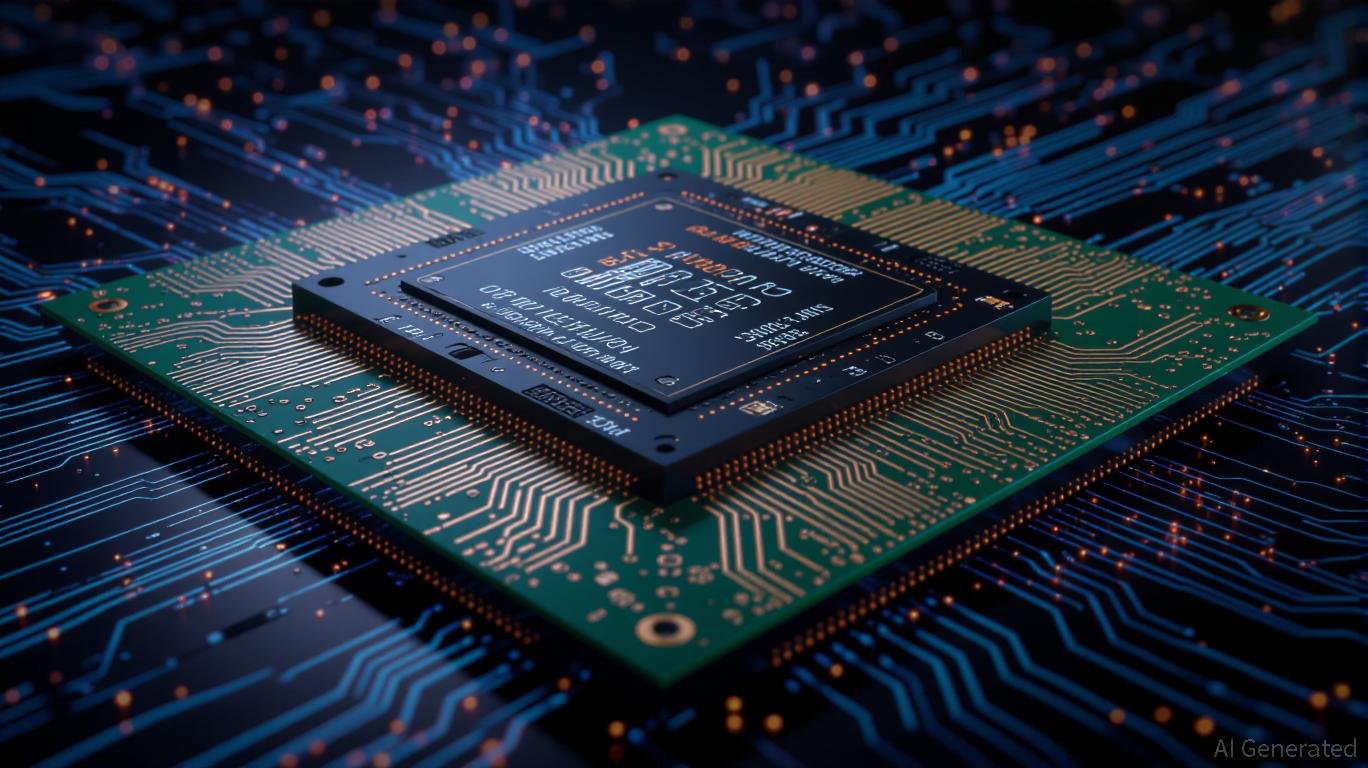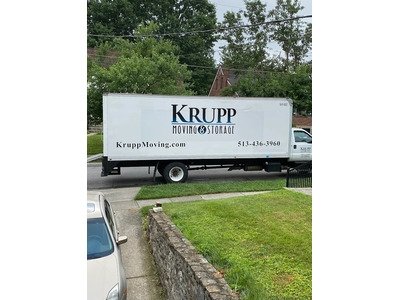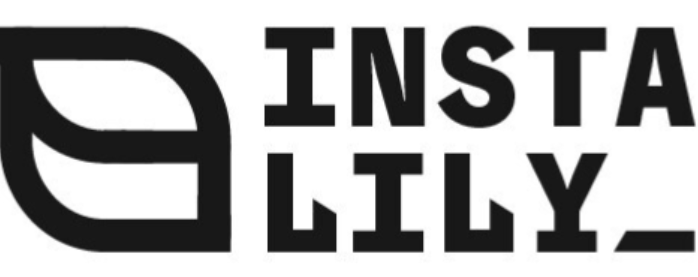Tools & Platforms
Will GenAI Companies Ever Make Money?

According to a recent MIT report, 95% of organizations are seeing no (or very limited) returns from their internal generative AI pilot programs, despite large investments in their implementation. The study has its limitations, especially given the limited sample size of professionals and executives surveyed. But it offers a stark counterargument to the optimistic narratives promoted by OpenAI, Anthropic, and other prominent genAI companies.
Skepticism around their products’ ability to help companies increase revenue and profit, even in the medium to long term, is becoming more common, and not just among AI optimists anymore. This shift has intensified after GPT-5, OpenAI’s latest LLM, failed to live up to the heightened expectations set by Sam Altman himself.
While the use case and profitability of genAI applications is still very much to be proven, the IT industry’s bet on genAI and the companies developing it is already massive. From 2013 to 2020, cloud infrastructure capital expenditure grew from $32 billion to $119 billion, driven mostly by the rise of social media platforms and video content.
Post-Covid, the curve goes wild: in 2024, spending reached $285 billion, and in 2025, the top 11 cloud providers are forecasted to invest almost $400 billion. That’s more than they’ve committed in the past two years combined and the figure mostly stems from the massive compute needs for training and inferring LLM models.
READ ALSO
A Complex Answer
The fundamental disconnect between the money companies are spending to compete in the AI race and the potential return on investment is widening as fast as their capex. A growing cadre of experts is asking the same fundamental question: with this uncertainty around the effectiveness of its real-world business application, will gen AI as a market ever be able to make money?
In a moment of profound change, the answer is complex and open to interpretation. On one side, we need to take the “inevitabilism” of Altman, Amodei, and other AI maximalists with a sizable grain of salt. It’s simply not true that a future where their particular flavor of genAI dominates the workplace and integrates into our lives at all levels is “inevitable”, despite what they’d like us to take at face value as they scour for even more funding dollars.
On the other hand, it’s undeniable that, despite the debate about its applicability, genAI represents a technological revolution. The technology itself is formidable, and its positive impact on at least personal productivity is undeniable. Yet it remains vastly unclear, as the MIT study demonstrates, whether it will ever be able to justify its technological costs.
A Bubble?
These two sides of the same coin can be true at the same time: genAI is one of the most important technologies of all time, and we’re in a bubble regarding its potential and applications. Remarkably, this admission comes from Sam Altman himself. OpenAI’s CEO, in a recent interview with US reporters, tried to deflate expectations he helped set up in the past:
“Are we in a phase where investors as a whole are overexcited about AI? My opinion is yes. Is AI the most important thing to happen in a very long time? My opinion is also yes.”
To make matters worse, all generative AI services we’re currently using personally and at work (including ChatGPT, Claude, Cursor, Microsoft Copilot, and Google Gemini) are heavily subsidized by either investors’ or companies’ money. While the combined number of their active users already exceeds one billion, both OpenAI and Anthropic will close 2025 reporting billions in revenue and even more in losses.
READ ALSO
Like Uber?
The playbook we’re seeing unfold isn’t far removed from that of other hyperscale platforms like Uber. A moment will come when prices must rise to start returning capital to the large number of investors. Uber delayed that moment for years, collecting eager investors’ money with the far-fetched promise of autonomous driving—until that didn’t work anymore.
OpenAI and Anthropic are doing the same, dangling the promise of AGI (artificial general intelligence) or ASI (artificial super intelligence) to collect billions in funding while waiting long enough for the technology to become indispensable. But while ride-hailing had immediate benefits in disrupting an established industry with lower cost solutions, the AI startups’ bet is far bolder and definitely way more expensive to maintain.
A Skeptic at Goldman Sachs
Jim Covello, the Head of Global Equity Research at Goldman Sachs, is among the genAI skeptics. He says that to earn a relevant return on investment, gen AI should be able to solve extremely complex problems that justify its immense cost.
In a Goldman Sachs report published in 2024, Covello explains:
“We estimate that the AI infrastructure buildout will cost over $1tn in the next several years alone, which includes spending on data centers, utilities, and applications. So, the crucial question is: What $1tn problem will AI solve? Replacing low- wage jobs with tremendously costly technology is basically the polar opposite of the prior technology transitions I’ve witnessed in my thirty years of closely following the tech industry. While the question of whether AI technology will ever deliver on the promise many people are excited about today is certainly debatable, the less debatable point is that AI technology is exceptionally expensive, and to justify those costs, the technology must be able to solve complex problems, which it isn’t designed to do.”
One year after Goldman Sach’s report, we are still very much hearing the same narrative, with AI companies swearing by the scaling myth, saying all they need is just a bit more data, just a bit more training, and just a bit more investor money to get all that.
A $1 Trillion Question
It’s a $1 trillion question: what happens when the financial realities can no longer be delayed, with investors and companies realizing that the chasm between costs and applications can’t be filled?
History suggests that bubbles burst when the gap between investment and practical returns becomes unsustainable. The dot-com crash of 2001 offers a sobering reminder of what occurs when investor enthusiasm dramatically outpaces actual utility, even though the fundamental technology (the Internet) was so important that it would later become ubiquitous.
If businesses begin demanding concrete returns on their AI investment and find them lacking a significant market correction could follow. Companies that have built their valuations on AI promises may face a harsh reckoning with reality, negatively affecting the global economy as a consequence.
READ ALSO
Tools & Platforms
Geopolitical and Technological Implications for Global AI Infrastructure Investment

In 2025, Abu Dhabi-backed technology group G42 has embarked on a transformative journey to diversify its AI chip supply chain, signaling a pivotal shift in global infrastructure investment. By reducing reliance on Nvidia—the dominant force in AI semiconductors—G42 is not only reshaping its own technological ecosystem but also catalyzing a broader trend of supplier diversification driven by geopolitical tensions, supply chain resilience, and the urgent need for competitive hardware innovation. For investors, this shift presents both risks and opportunities, demanding a nuanced understanding of the interplay between geopolitics, technological evolution, and market dynamics.
The Geopolitical Imperative: Diversification as a Strategic Necessity
G42’s decision to pivot from Nvidia is emblematic of a larger geopolitical recalibration. The UAE’s $5 gigawatt AI campus, a cornerstone of its economic diversification strategy, is being designed to avoid over-reliance on any single vendor. This approach aligns with U.S. government initiatives to secure critical technology supply chains, such as the CHIPS Act and export control policies aimed at curbing China’s access to advanced semiconductors. By engaging with U.S. firms like AMD, Cerebras, and Qualcomm, G42 is embedding itself in a geopolitical framework that prioritizes American technological leadership while mitigating risks associated with U.S.-China tensions.
The UAE’s alignment with U.S. tech giants—exemplified by a $1.5 billion investment from Microsoft and the integration of G42 into the Azure cloud ecosystem—further underscores this strategy. Microsoft President Brad Smith’s involvement on G42’s board highlights the company’s commitment to “responsible AI” in collaboration with U.S. and UAE regulators. Meanwhile, G42’s divestment from Chinese chipmaker Huawei reflects a deliberate move to comply with U.S. export restrictions and avoid entanglements in the Sino-American tech rivalry.
Technological Diversification: Beyond the Nvidia Monoculture
G42’s supplier diversification is not merely a geopolitical maneuver but a technological one. The initial phase of its AI campus, “Stargate,” will deploy Nvidia’s Grace Blackwell GB300 systems for 20% of its capacity. However, the remaining 80% will leverage alternative architectures, including AMD’s Instinct MI350 series, Cerebras’ wafer-scale engines, and Qualcomm’s edge AI solutions. This multi-vendor approach allows G42 to optimize for different AI workloads:
- AMD’s MI350X offers 288 GB of HBM3E memory and 8.0 TB/s bandwidth, competing directly with Nvidia’s Blackwell architecture.
- Cerebras’ wafer-scale chips, with 850,000 cores, provide unparalleled parallelism for large-scale AI training.
- Qualcomm’s edge AI accelerators cater to low-latency, on-device processing, expanding the campus’s versatility.
This diversification reduces bottlenecks and fosters innovation by enabling G42 to leverage specialized architectures for specific tasks. For instance, Cerebras’ wafer-scale chips could revolutionize generative AI training, while AMD’s high-memory GPUs might excel in recommendation systems or large language models.
Risks and Opportunities for Investors
The shift toward supplier diversification introduces both risks and opportunities for investors in semiconductor and AI infrastructure sectors:
Risks
- Geopolitical Volatility: U.S. export controls and shifting trade policies could disrupt supply chains. For example, AMD’s $1.5 billion revenue loss in 2025 due to China export restrictions highlights the fragility of markets in a bifurcated global landscape.
- Technological Uncertainty: Niche players like Cerebras, while innovative, face challenges in scaling adoption and competing with Nvidia’s CUDA ecosystem.
- Market Competition: Saudi Arabia’s HUMAIN project, with its $77 billion AI infrastructure plan, is intensifying regional rivalry, potentially fragmenting the AI market.
Opportunities
- Growth in Alternative Suppliers: AMD’s Q1 2025 revenue growth of 36% and data center revenue surge of 57% demonstrate the potential of diversified chipmakers. Investors could benefit from AMD’s $13–15 billion AI chip sales target for 2025.
- Niche Innovators: Cerebras’ wafer-scale architecture, though unproven at scale, could capture a niche in high-performance computing (HPC) and AI research.
- Edge AI Expansion: Qualcomm’s focus on edge computing positions it to capitalize on decentralized AI workloads, a $200 billion market by 2030.
Actionable Investment Strategies
For investors navigating this transformation, the following strategies are recommended:
- Diversify Semiconductor Portfolios: Allocate capital across both established players (e.g., AMD, TSMC) and niche innovators (e.g., Cerebras, Groq). This balances exposure to proven revenue streams with high-growth potential.
- Monitor Geopolitical Developments: Track U.S. export policy shifts and China’s self-sufficiency goals. For example, the U.S. “small yard, high fence” strategy could favor domestic chipmakers like TSMC and AMD.
- Invest in AI Infrastructure Ecosystems: Prioritize companies with strong partnerships in AI infrastructure, such as Microsoft (Azure integration with G42) and Oracle (multi-generational AI supercomputers with AMD).
- Consider Regional AI Hubs: The UAE and Saudi Arabia’s AI projects represent $100+ billion in infrastructure investment. Positioning in firms supplying these hubs (e.g., Cerebras, Qualcomm) could yield long-term gains.
Conclusion: A New Era in AI Infrastructure
G42’s strategic shift from Nvidia is a harbinger of a more fragmented yet dynamic global AI landscape. As geopolitical tensions and technological innovation converge, investors must adopt a dual focus: hedging against supply chain risks while capitalizing on the rise of alternative suppliers. The UAE’s AI campus, with its multi-vendor approach and geopolitical alignment, exemplifies how infrastructure investment can drive both technological progress and strategic autonomy. For those willing to navigate the complexities of this transformation, the rewards could be substantial.
Tools & Platforms
Krupp Moving & Storage Becomes First Movers in Cincinnati to Deploy AI-Powered Route Optimization, Reducing Moving Times by 35% While Cutting Customer Costs

A Krupp Moving & Storage truck parked in a residential neighborhood, ready to assist with a household move.
Krupp Moving and Storage, the top moving company in Cincinnati, has introduced AI-powered route optimization systems, revolutionizing the relocation industry. This innovation enhances efficiency and cost-effectiveness across Ohio, addressing long-standing challenges in the sector. After months of development and testing, Krupp is the first to integrate this cutting-edge technology into traditional moving services.
Cincinnati’s relocation industry has reached a technological milestone with Krupp Moving and Storage, the #1 Cincinnati Moving Company, introducing artificial intelligence-powered route optimization systems. This innovation marks a significant advancement in how professional relocation services operate, setting new standards for efficiency and cost-effectiveness across Ohio’s moving industry.
The implementation represents months of development and testing, positioning Krupp Moving and Storage as the pioneering company to integrate innovative technology solutions into traditional moving operations. This breakthrough addresses long-standing challenges that have affected both service providers and customers throughout the region.
Advanced Technology Transforms Traditional Moving Operations
The AI-powered system analyzes multiple data points, including traffic patterns, weather conditions, construction zones, and optimal loading sequences, to determine the most efficient routes for each relocation. This sophisticated technology processes real-time information to adapt routes dynamically, ensuring trucks reach destinations using the fastest possible paths. With these innovations, the company sets a new standard among professional movers Cincinnati residents trust for efficiency and reliability.
Krupp Moving and Storage invested significant resources into developing this proprietary system, working with technology partners to create algorithms specifically designed for the moving industry. The system accounts for factors unique to relocation services, including truck size restrictions, parking limitations, and loading dock accessibility.
The technology integration required extensive training for the Krupp Moving and Storage team members, ensuring seamless adoption across all Cincinnati operations. Staff members now receive real-time route updates and traffic information through mobile devices, enabling immediate adjustments when road conditions change.
Documented Performance Improvements Benefit Cincinnati Residents
Initial performance data from the AI system shows remarkable improvements in operational efficiency. Moving times have decreased by an average of 35%, translating directly into cost savings for customers who pay hourly rates for relocation services.
The system has reduced fuel consumption by 28%, contributing to both environmental benefits and lower operational costs. These savings enable Krupp Moving and Storage to maintain competitive pricing while delivering enhanced service quality to Cincinnati area residents and businesses.
Customer satisfaction scores have increased significantly since the implementation of AI began. Clients report reduced stress levels during relocations, attributed to more predictable arrival times and faster completion of moving projects.
Industry Recognition for Innovation Leadership
The Ohio Moving and Storage Association has acknowledged Krupp Moving and Storage for this technological advancement, noting the potential impact on industry standards. Professional moving companies across the state are monitoring the results as a potential model for future industry developments.
Technology industry publications have featured the implementation as an example of AI applications in traditional service sectors. The successful integration demonstrates how established businesses can adapt cutting-edge technology to improve customer outcomes while maintaining operational excellence.
Local business organizations have recognized Krupp Moving and Storage for innovation leadership, highlighting the company’s commitment to advancing professional standards within the Cincinnati business community.
Comprehensive Service Portfolio Maintains Quality Standards
The AI integration complements Krupp Moving and Storage’s existing service offerings without compromising the personalized attention that has built the company’s reputation since 2005. Residential relocations continue to receive the same careful handling, with background-checked staff members providing professional service for homes, apartments, and condominiums.
Commercial clients benefit from the enhanced efficiency while receiving specialized business relocation services designed to minimize operational disruptions. The AI system helps coordinate complex office moves more effectively, reducing downtime for Cincinnati businesses during relocations.
Storage solutions remain available for clients requiring temporary or long-term options, with the improved logistics helping coordinate deliveries from storage facilities more efficiently than traditional scheduling methods.
Economic Impact Strengthens Local Business Community
The technological advancements position Krupp Moving and Storage for continued growth within Ohio’s competitive moving market. The company’s investment in AI technology creates opportunities for additional hiring, as operational efficiency improvements enable expanded service capacity.
Local suppliers and service partners benefit from the increased operational volume that results from faster project completion times. The ripple effect strengthens the broader Cincinnati business ecosystem while maintaining the company’s commitment to supporting local economic development.
The innovation attracts attention from potential commercial clients seeking technologically advanced services. This advancement solidifies the company’s position among top-rated movers in Cincinnati, establishing the region as a forward-thinking market for businesses considering relocation.
Future Development Plans Build on Current Success
Krupp Moving and Storage plans to expand the AI system’s capabilities based on performance data collected during the initial implementation period. Future enhancements may include predictive scheduling algorithms and automated inventory management systems.
The company is exploring partnerships with other Cincinnati businesses to share best practices for AI integration in traditional service industries. This collaborative approach could accelerate technology adoption across multiple sectors within the local business community.
Research and development efforts continue as Krupp Moving and Storage evaluates additional applications for artificial intelligence within moving and storage operations. The success of route optimization provides a foundation for exploring other areas where technology can improve customer experiences and operational efficiency.
About Krupp Moving And Storage
Founded in 2005, Krupp Moving and Storage operates as a regional moving company serving the Ohio communities of Cincinnati, Columbus, Cleveland, and surrounding counties. The company maintains state licensing and insurance requirements while employing background-verified staff members. Operating from multiple locations in Ohio, the company offers residential and commercial relocation services across Summit, Wayne, Holmes, Richland-Ashland, and Medina Counties.
Media Contact
Company Name: Krupp Moving And Storage
Contact Person: TIM
Email: Send Email
Phone: +15136139542
Address:151 W 4th St suite 502
City: Cincinnati
State: Ohio 45202
Country: United States
Website: https://kruppmoving.com/cincinnati/
Tools & Platforms
InstaLILY Raises $25M to Bring AI Teammates to the Frontlines of Distribution

Insider Brief
- InstaLILY AI raised $25M Series A led by Insight Partners, with backing from Perceptive Ventures and Marvin Ventures, to expand its catalog of InstaWorkers™ and deepen enterprise integrations.
- Unlike copilots or chatbots, InstaWorkers™ are domain-trained AI Teammates that execute full workflows inside legacy systems (ERPs, CRMs, ticketing tools) across industries like construction, OEM equipment, and insurance — delivering measurable results such as 70% faster claims processing.
- Purpose-built for execution, InstaLILY is pioneering “Code-as-Work” by embedding AI directly into sales, service, and operations teams — handling quoting, issue triage, and exception management, while extending into multimodal use cases like voice and video support for field service and contact centers.
PRESS RELEASE — InstaLILY AI, the maker of AI Teammates for the world’s most operationally intensive industries, has announced a $25 million Series A funding round led by global software investor Insight Partners, with participation from Perceptive Ventures and Marvin Ventures.
InstaLILY is pioneering a new way to bring AI into the enterprise: instead of stitching together tools or building automation flows, companies can now hire vertical-specific AI Teammates — called InstaWorkers™ — that execute actual work inside legacy systems of records like ERPs, CRMs or any existing software tools.
Purpose-Built for Execution, not just Automation
The platform is purpose-built for distribution-heavy verticals where automation has historically failed. These industries — from physical goods like industrial parts to services like insurance and healthcare — depend on large catalogs, specialized knowledge and fragmented tools, creating high-volume, multi-step work that consumes expert human time. InstaWorkers™ solve this by being trained on the domain-specific processes unique to these industries, navigating their complex software environments without rip-and-replace, and executing full workflows autonomously.
Here’s how InstaWorkers™ get the job done:
- Understand Your Business: They are trained on the domain-specific processes, documentation, and systems unique to your industry.
- Work Across Your Tools: They navigate fragmented software environments (CRMs, ERPs, ticketing platforms) without requiring costly rip-and-replace projects.
- Execute, Not Just Advise: They autonomously complete full workflows, with options for human-in-the-loop oversight, moving beyond simple suggestions to take decisive action.
“We kept hearing the same thing: AI copilots are useful, but they don’t do the work,” said Amit Shah, Founder and CEO of InstaLILY. “InstaWorkers™ are different. They’re AI Teammates — built to execute, not just suggest next steps. That’s the promise of Code-as-Work: AI that radically expands human capacity, not replaces it.”
InstaWorkers™ on the Job
Customers are already deploying teams of InstaWorkers™ to augment their sales, service, and operations staff — with many seeing immediate results:
- A $10B+ construction-supply distributor is empowering its 1,500+ managers with an AI Sales support team. The InstaWorkers™ turn sales data into actionable follow-ups, allowing managers to spend more time on strategic account growth and coaching their teams.
- One of the largest global OEM equipment platforms deploys AI service specialists to support its field technicians. These InstaWorkers™ analyze complex fault descriptions and predict the most likely replacement part from thousands of SKUs, empowering technicians to focus on high-stakes repairs and customer service.
- A PE-backed insurance and healthcare services provider staffed an AI claims operations team to handle high-volume denials. The InstaWorkers™ extract policy and claim data, evaluate it against coverage rules, flag appealable cases, and generate compliant responses — reducing manual review time by 70% and accelerating resolution cycles.
Real Execution, Not Just Assistance
InstaLILY doesn’t just assist — it executes. While horizontal AI platforms focus on summarization, chat, task routing, or surface-level automation, InstaLILY delivers deep, decision-oriented execution. InstaWorkers™ take ownership of the high-stakes, high-variation workflows that drive revenue and service outcomes, such as quoting, issue triage, part validation, and exception handling. This isn’t robotic process automation; it’s domain-trained intelligence built to operate across legacy systems, tribal processes, and real-world complexity.
“These aren’t chatbots,” said Sumantro Das, Co-founder and COO of InstaLILY. “They’re AI Teammates who are embedded in the team and doing the work, not floating around it.”
Investor Perspective
“Hiring a domain-trained AI Teammate is one of those rare ideas that’s both intuitive and built to scale,” said Crissy Costa Behrens, Principal at Insight Partners. “InstaLILY is executing where horizontal AI tools stall — delivering vertical AI that doesn’t just assist but actually owns outcomes. With InstaWorkers™, InstaLILY is helping build a better future of work: grounded in actions, not suggestions.”
What’s Next
With this Series A funding, InstaLILY will expand its catalog of pre-trained InstaWorkers™ across new verticals, deepen integration support for common enterprise systems, and accelerate adoption across sales, service, and operations teams to help customers scale AI Teammate deployments without disrupting their existing workflows. The team is now extending multimodal capabilities even further, enabling agents to process voice and video inputs — unlocking new use cases in field service, contact centers, and human-agent-robot collaboration.
About InstaLILY
InstaLILY is the platform for hiring AI Teammates who already know your industry vertical. Its domain-trained AI agents — called InstaWorkers™ — execute the core sales, service, and operations workflows of distribution-heavy and regulated businesses. Built for execution and immediate impact, InstaWorkers™ plug into your existing tools to deliver value from day one. Learn more at www.instalily.ai
About Insight Partners
Insight Partners is a global software investor partnering with high-growth technology, software, and Internet startup and ScaleUp companies that are driving transformative change in their industries. As of December 31, 2024, the firm has over $90B in regulatory assets under management. Insight Partners has invested in more than 800 companies worldwide and has seen over 55 portfolio companies achieve an IPO. Headquartered in New York City, Insight has offices in London, Tel Aviv, and the Bay Area. Insight’s mission is to find, fund, and work successfully with visionary executives, providing them with tailored, hands-on software expertise along their growth journey, from their first investment to IPO. For more information on Insight and all its investments, visit insightpartners.com or follow us on X @insightpartners.
-

 Business3 days ago
Business3 days agoThe Guardian view on Trump and the Fed: independence is no substitute for accountability | Editorial
-
Tools & Platforms3 weeks ago
Building Trust in Military AI Starts with Opening the Black Box – War on the Rocks
-

 Ethics & Policy1 month ago
Ethics & Policy1 month agoSDAIA Supports Saudi Arabia’s Leadership in Shaping Global AI Ethics, Policy, and Research – وكالة الأنباء السعودية
-

 Events & Conferences3 months ago
Events & Conferences3 months agoJourney to 1000 models: Scaling Instagram’s recommendation system
-

 Jobs & Careers2 months ago
Jobs & Careers2 months agoMumbai-based Perplexity Alternative Has 60k+ Users Without Funding
-

 Funding & Business2 months ago
Funding & Business2 months agoKayak and Expedia race to build AI travel agents that turn social posts into itineraries
-

 Education2 months ago
Education2 months agoVEX Robotics launches AI-powered classroom robotics system
-

 Podcasts & Talks2 months ago
Podcasts & Talks2 months agoHappy 4th of July! 🎆 Made with Veo 3 in Gemini
-

 Podcasts & Talks2 months ago
Podcasts & Talks2 months agoOpenAI 🤝 @teamganassi
-

 Mergers & Acquisitions2 months ago
Mergers & Acquisitions2 months agoDonald Trump suggests US government review subsidies to Elon Musk’s companies





















